Comparing milk alternatives using Amazon reviews

These days, what you put in your coffee – whether that’s milk from an animal or plant-based milk alternatives – somehow defines you as an individual. Your decision on this polarizing subject is almost as telling as your political leaning or religious beliefs. Let’s find out why.
Brands use Relative Insight competitor analysis to understand industry landscape. By uncovering the customer insights for your brand in addition to your competitors, you can discover your unique strengths and weaknesses.
Relative Insight’s technology compares two or more brands or topics to uncover the differences in how people speak – the topics, words, phrases, grammar and emotion they use. We pulled Amazon reviews for various milk alternatives and compared them against one another to understand why people make their decisions.
Almond
Almond milk drinkers valued low calorie options, and they were more likely to mention the product’s caloric value, using the phrases 30 calories and 25 calories often. As the lowest calorie milk option, reviewers set aside taste or health preferences for fewer calories.
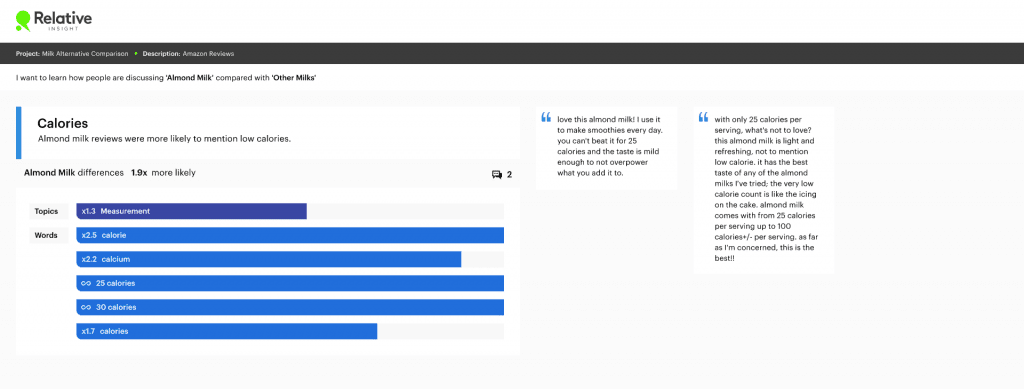

In addition to low calories, almond milk drinkers valued low prices. They mentioned phrases like great price, good price and great value when reviewing almond milks. As an early milk alternative, almond milk prices are now equally as inexpensive as cow’s milk.
Oat
Oat milk drinkers had one specific use: coffee. Reviewers mentioned words like coffee, latte, morning, creamer and espresso. Many found the product too thick to drink alone, but perfect for cutting through the bitterness of their morning coffee.
This led to comments on the texture of the product and its ability to froth or foam. While there were mixed reviews on whether or not it created a good froth, oat milk drinkers were more likely to use oat milk for this purpose.
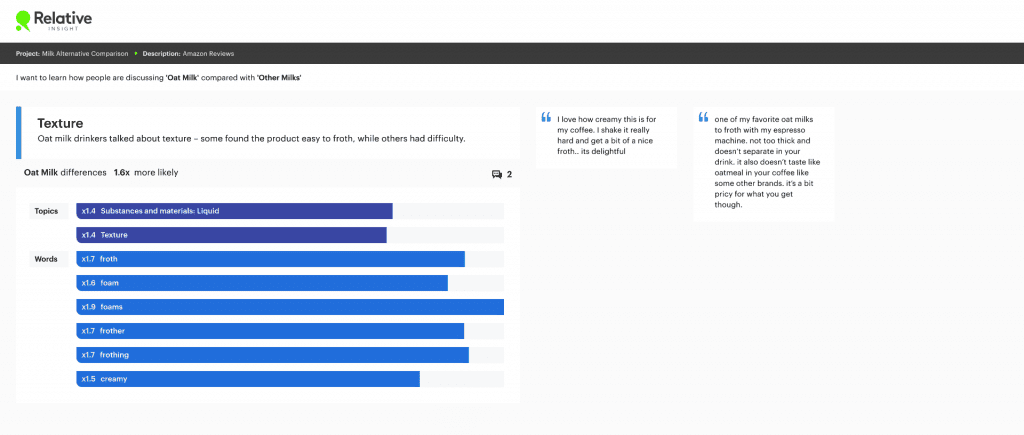

Macadamia
Reviewers loved the taste of Macadamia milk. They used words like sweet, flavor and tastes when reviewing the products. These discussions typically had positive connotations, with reviewers talking about how much they preferred the taste over other milk alternatives.
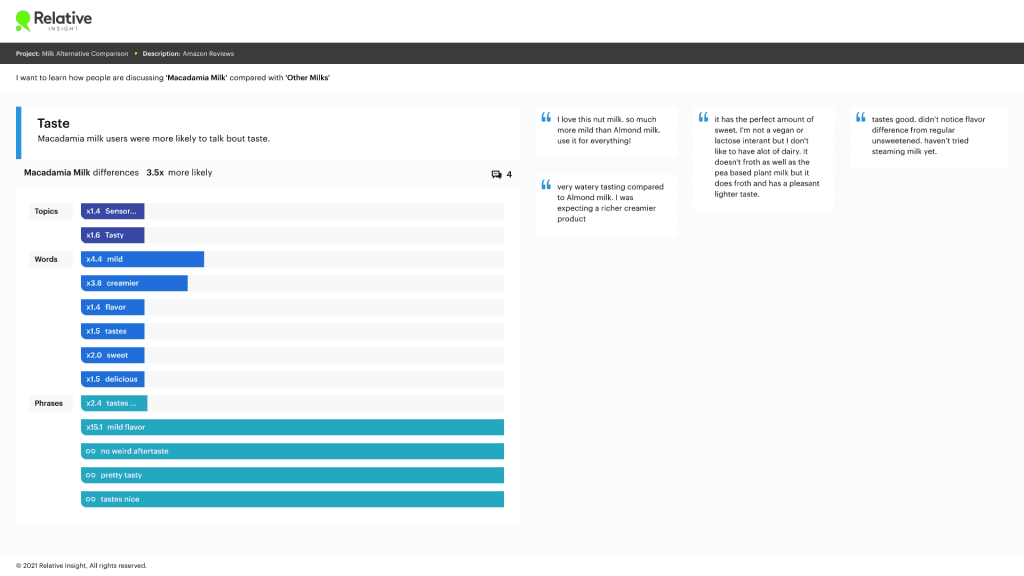

Many consumers on strict diets, or with food sensitivities and health issues said that they preferred macadamia milk over all other milk alternatives. They mentioned words like keto, carbs, macros, health reasons, cholesterol free, low carb diets and more.
Cow’s
Cow’s milk, the unfashionable original, maintained its image as an essential household item. Reviews talked about the product within the context of family, using words like children, toddler, dad, daughter, and father.
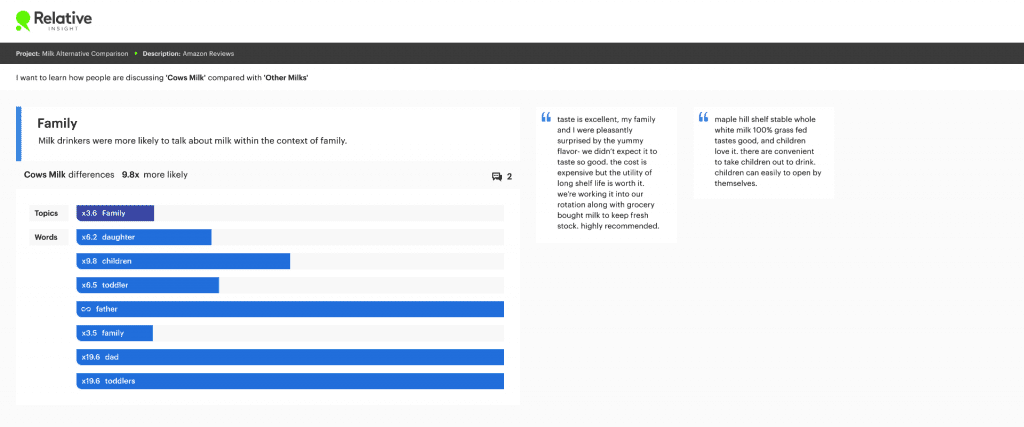

Reviewers chose milk products that underwent minimum processing. They cared about the pasteurization and homogenization processes, preferring few GMOs and added hormones.
Soy
This concern was not exclusive to cow’s milk drinkers. Reviewers also favored soy milks that did not contain additives. Reviews included phrases like no fake ingredients, no weird ingredients, cruelty free and additive free. They sought out products that were simple and used whole ingredients.
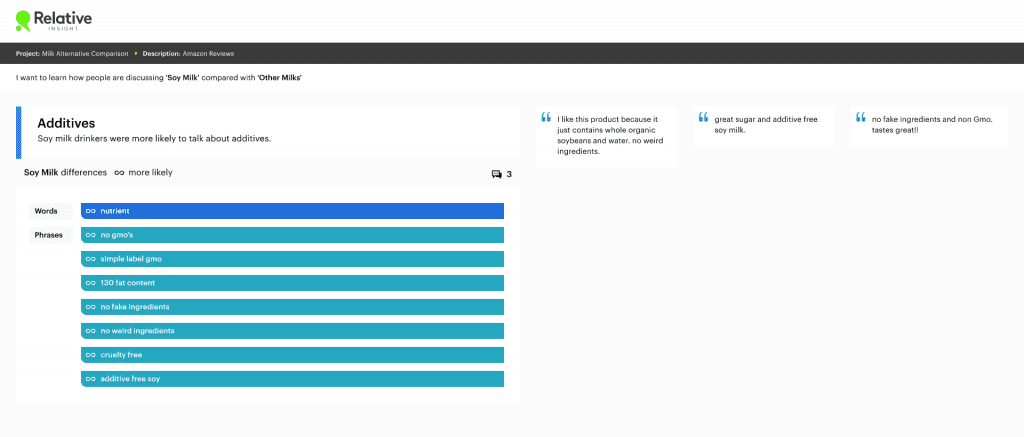

Each milk has unique strengths that draw customers in – whether it’s sustainable, low calorie, creamy or healthy. By comparing all these online reviews for milk alternatives, we can see the factors that drive the consumer decision making process.
Reviews can help us learn more about competitors of all industries – insurance, beauty, audiobooks and more. Customer insights examples like these provide you with a surefire way to understand the unique likes and dislikes of your audience base, informing future product innovation and marketing communications.
